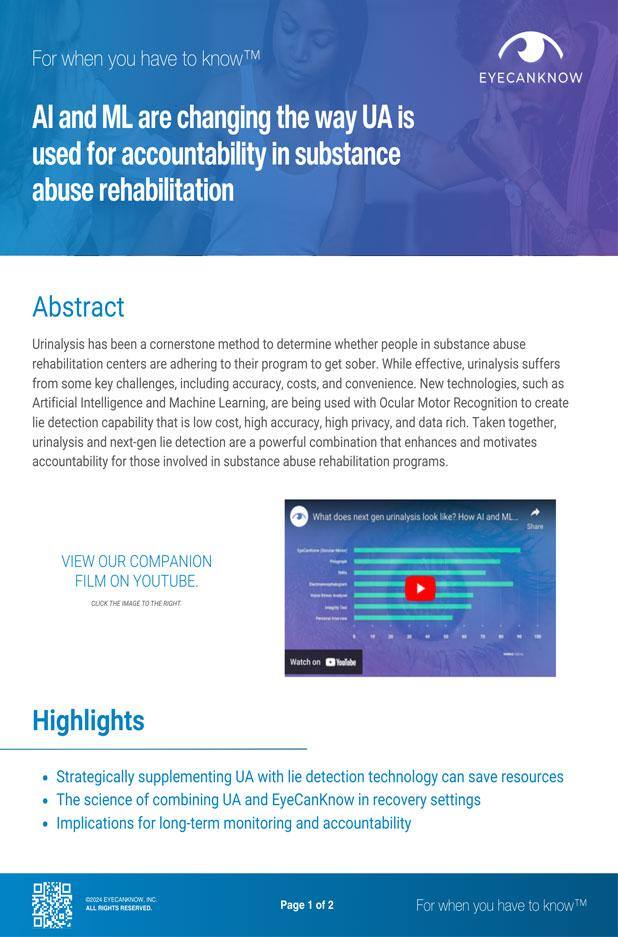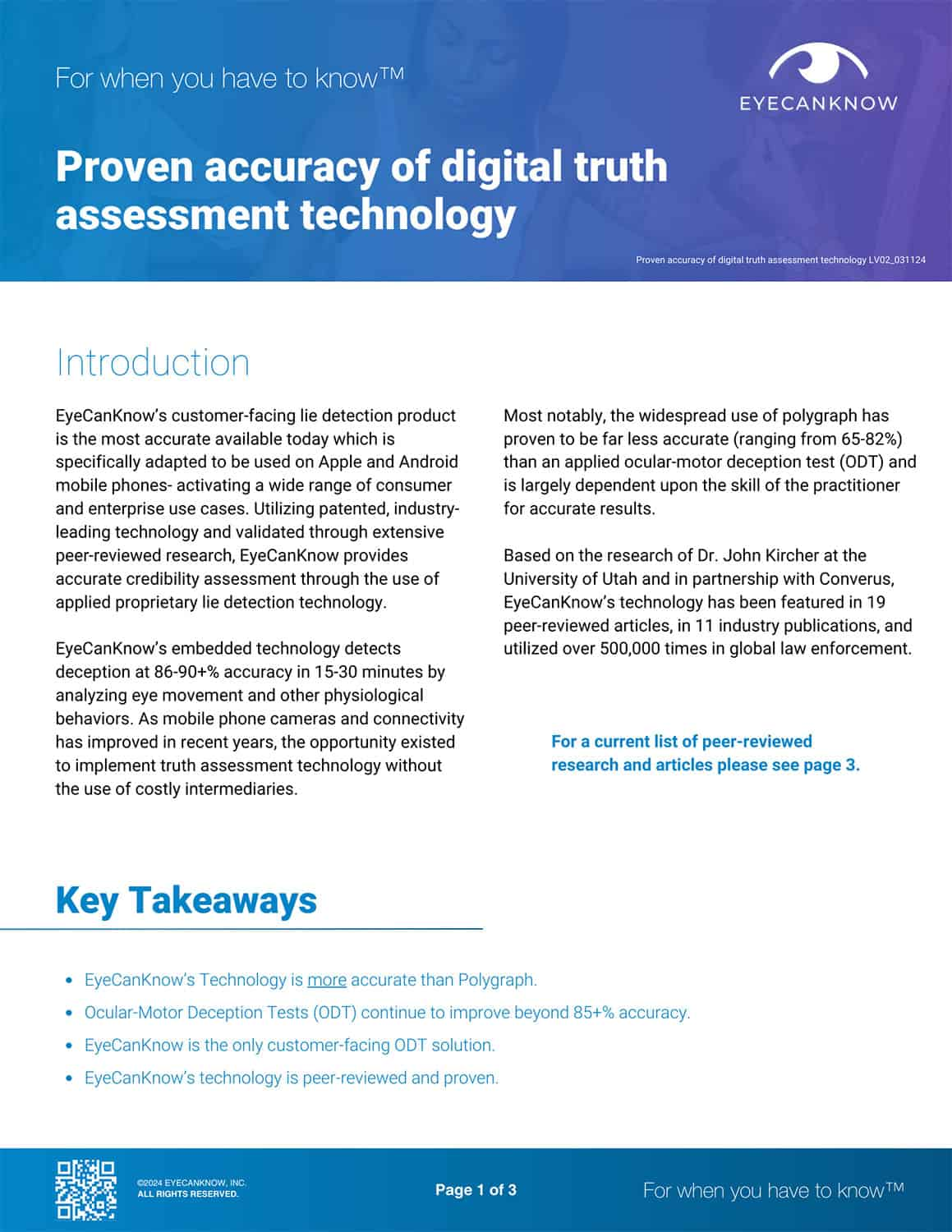Proven accuracy of digital truth assessment technology
INTRODUCTION EyeCanKnow’s customer-facing lie detection product is the most accurate available today...
1 min read
 Dr. Bryan K. Ritchie, PhD
:
Mar 19, 2024 2:22:41 AM
Dr. Bryan K. Ritchie, PhD
:
Mar 19, 2024 2:22:41 AM

Urinalysis has been a cornerstone method to determine whether people in substance abuse rehabilitation centers are adhering to their program to get sober. While effective, urinalysis suffers from some key challenges, including accuracy, costs, and convenience. New technologies, such as Artificial Intelligence and Machine Learning, are being used with Ocular Motor Recognition to create lie detection capability that is low cost, high accuracy, high privacy, and data rich. Taken together, urinalysis and next-gen lie detection are a powerful combination that enhances and motivates accountability for those involved in substance abuse rehabilitation programs.
In the U.S. and across the world, the number of required Urinalysis tests performed in a given year is growing at an accelerated rate (doubling by 2031). Urinalysis is not only quickly becoming prohibitive due to rising laboratory costs, it’s time-consuming- it’s also become a major aversion for those required to undergo UA, especially those who are recovering from addiction or are required to complete an industry testing program.
Today, UA is widely used in recovery and industry settings to determine whether a person has illegal substances in their bodies. New technologies including AI and Machine Learning however are offering alternatives to UA that makes testing faster, more accurate, less invasive, and less expensive.
By incorporating the latest in AI and Machine Learning, EyeCanKnow uses the most accurate lie-detection technology available… which tracks ocular motor changes to assess credibility. On average, a UA test costs in excess of $100. While an EyeCanKnow testing program can cost as little as $10-$40.
Unlike a UA test, an EyeCanKnow test can be done in private, at any convenient location for the test taker. The test data are then tabulated in the cloud and with AI and Machine Learning, the results are immediately sent directly to the test maker.
There’s no intermediary necessary.
Coupling UA and EyeCanKnow testing not only improves data quality and depth, it improves the test taker’s experience, provides deeper insight and communication, helps foster trust, and ultimately leads to better outcomes from consistency without the adherence issues present in today's UA testing environment.
This white paper explores the history of UA, the significance of UA in drug abuse detection, challenges and limitations, technological advancements (including AI and Optical Motor Recognition (OMR), and future trends in the field. It concludes with recommendations for advancing accountability within a rehabilitation environment.


INTRODUCTION EyeCanKnow’s customer-facing lie detection product is the most accurate available today...

New breakthroughs in lie detection technology, like eye lie detector tests are creating pathways people can use to find the truth in their most...

Lie detection tests, such as those offered by EyeCanKnow, are pivotal in discerning truth from deception in various situations, including infidelity...